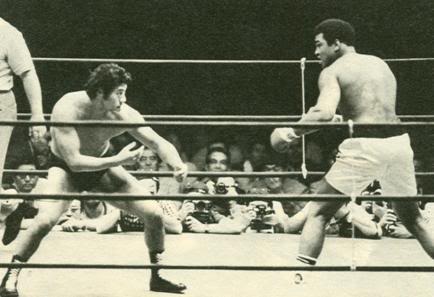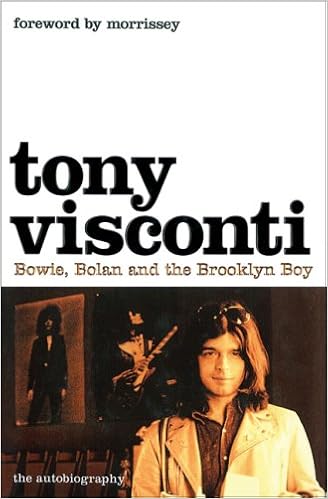In Sing
Street, a sensitive kid named Connor Lawler (Ferdia Walsh-Peelo) - soon to be nicknamed ‘Cosmo’ - spots a
stylish older girl named Raphina (Lucy Boynton). It’s 1985 Dublin, so she’s
dressed like a mix of early Madonna and Cyndi Lauper. She claims to be a model. He claims to be a singer
in a rock band; he needs a model like her to star in his next video. We know
he’s lying – he’s just a skinny, unassuming boy who has been shipped to a new
school where he’s harassed by bullies and teachers alike - and we sense she might be lying, too. Cosmo presses ahead, though all he
knows about music is what he hears from his older brother (Jack Reynor), a
stoner in his mid-twenties who wallows in the ‘80s pop explosion. It’s MTV
time: Duran Duran, puffy haircuts, and the dying embers of The Clash. When Raphina asks Cosmo to sing a bit for her, he
warbles a few off-key lines from the '80’s chestnut, ‘Take On Me’ by A-Ha.
Astoundingly, she accepts his invitation to star in his video. He promptly runs
to meet one of his mates and announces, “We have to start a band.” That’s where
the fun part of the movie begins, as Cosmo finds what little talent there is
among his rough school mates and, with tips from his brother, whips his raggedy
little group into rock ‘n’ roll shape. Writer-director John Carney borrows a
bit from films like The Commitments
and School of Rock and even High Fidelity, but his real inspiration
seems to be the films of John Hughes.
Squint your eyes, and Cosmo could be Jon Cryer or Anthony Michael
Hall; Raphina could be Molly Ringwald or
Ally Sheedy. Sing Street is only
superficially about rock ‘n’ roll. It’s actually a romantic teen fantasy, where
each of the characters nurses a little wound somewhere in their soul, and the
underdogs win.
Carney
obviously has an affection for the period and the music, but when Cosmo goes
from being a Duran Duran wannabe, to a Robert Smith clone, to wearing one of
those dreadful little hats that bands like Dexy’s Midnight Runners used to
wear, I couldn’t tell if this was just being done for a visual effect, or if
Carney was making a joke about the flimsiness of the era. The music of the 1980s was so delicate, like
bubbles, that it needed the silliness of videos to give it what little
substance it had. But the movie isn’t really about music, despite the walls of
vinyl at Cosmo’s house. Eventually, there are plots to be resolved, and
emotional hurts to come to the fore. Even the ultra-confidant Raphina has some
adolescent aches that need soothing. It turns out she’s a bit of a mess, but
Cosmo loves her just the same, even though she dismisses him as just a young boy.
And Cosmo’s family is falling apart – his mother is having an
affair, and his father will soon be moving out. The only solace Cosmo
finds during these troubling times is when he’s writing tunes with his buddy
Eamon, a loner kid who raises rabbits and happens to play all the instruments
in his father’s wedding band. I liked
Eamon. As played by Mark McKenna, he’s the sort of smirking kid I knew from my own teen years, a boy too
eccentric to be part of the crowd, but hording unsuspected talents. He’s the
sort of co-conspirator Cosmo needs, always willing to try something, no matter how
grandiose the idea. He steals every scene he’s in, flashing an easy smile at
the joy he has found: he’s in a band.
Fortunately,
McKenna doesn’t have any grandstanding moments, which Carney likes to lather on
like butter. Raphina gets her bit where she weeps and moans about the troubles
in her life, and Cosmo’s brother Brendan has a doozy of a scene where he
smashes a bunch of his old albums and laments how he’s wasted his life. “I used
to be a fucking jet engine!” he wails. Prior to this outburst, he slouched
around the house offering amusing bon mots, an Irish cross between Jack Black
and Seth Rogan. “No woman can truly love a man who listens to Phil Collins,” he
says at one point, which I suppose gets
a laugh in some theaters. As played by Jack Reynor, Brendan is the sort of
archetype who exists in these sorts of movies just to tell his younger brother,
“Don’t make the same mistakes I made!”
Strangely, he doesn’t look to be more than 24 or 25, but acts as if his
life is over. But that’s what makes the movie
lyrical, and gives Cosmo his chance to be a hero. By the end, as Cosmo and
Raphina run off together, we realize we’re not watching real people, but
fantasy figures, no more realistic than the illustrations on the cover of a
romance novel. They hurt inside, but the
hurts are there so the audience can say, yes, indeed, there’s no worse agony
than being a lonely teenager, yet there’s nothing that can’t be cured by simply
running down the street, hand in hand with your best girl or guy, while some
appropriate music plays in the background.
Carney
has so much fun with his movie that he piles on three or four happy endings,
but it all seems to happen too quickly. The gawky Cosmo becomes a dynamic front
man in too short a time; the band becomes polished after just a few rehearsals;
and Raphina goes from being the unattainable love object to Cosmo’s willing
sidekick with only a smidgen of fuss.
Raphina also appears younger in each scene – when we first see her she
looks like Joanna Lumley from Absolutely
Fabulous, but by the end of the movie she’s nearly as fresh-faced as young Cosmo.
The school bully (played with zeal
by Ian Kenny) , who seems as evil and
demented as a character from A Clockwork
Orange, mellows, too. That’s what
bullies do in movies like this – they turn out to be lovable, misunderstood
blokes. (In real life, though, they eventually murder somebody.) Carney gets a major boost from Yaron Orbach’s cinematography. Orbach
makes Dublin look refreshing, as if it’d been blown out by a gigantic hair
dryer, and scenes of ships leaving Dublin for London take on a mystical,
adventurous tone. The movie may be
hollow at its center, but Carney achieves what he set out to achieve, namely,
an inflated paean to adolescent daydreams of escape and triumph.
Where
Carney botched it in my book is in the way he treats the band. The scenes where they shoot their videos are
amusing enough, and the boys get to play a gig at their school where they take a
few jabs at a belligerent authority
figure, but the band seems to be less important as the movie rolls along. I wanted to know more about them, and share
in their excitement. There’s a nice clip in the trailer (that didn’t make it into
the movie) where the group’s scrappy little manager says, “I actually love this
band.” I would’ve preferred a movie where a kid starts a band to impress a
girl, and inadvertently falls in love with the band. There’s a great moment in
adolescence, if you’re lucky enough, where your favorite band is the one you’re
in. But Carney didn’t want to make that movie. Instead, he wanted to make The Breakfast Club, or Pretty in Pink, and the movie has been
successful enough on the indie and festival circuit (Reynor won a Best
Supporting Actor award from the Irish Film & Television Academy) that he’s probably quite proud. As they say
in Dublin, Fair play to him.
The
1980s and a middle-aged man's vision of teen yearning have been sweetened up in this
movie, presented like pictures in a restaurant menu that make the food look
twice as good as it does in reality. Five minutes after you leave the cinema, Sing Street vaporizes, except for one
bright, magical sequence where Cosmo proposes a band video based on the high school dance scene from Back
to The Future. The band suddenly appears in shiny suits, and Cosmo struts
convincingly with his hair in a pomp. His parents and brother appear in the
audience, teachers do handsprings across the gymnasium floor, and kids bustle
about doing their own awkward versions of 1950s dances. It's a fun bit - a 2016 movie looking back at a 1980s movie that looked back at the '50s. Fittingly, Carny’s version of the
1980s is as banal as Back to
the Future’s version of the ‘50s, but in this scene it works because it’s
only being imagined by Cosmo. When the sequence ends with him realizing the
gym is empty, we’re nearly as heartbroken as he is. And you may wonder how
moviemakers could stage a scene like this one, smartly melding fantasy - which
was the real raison d'être behind rock videos - and the
bittersweet, in the middle of such a
self-consciously upbeat movie.








